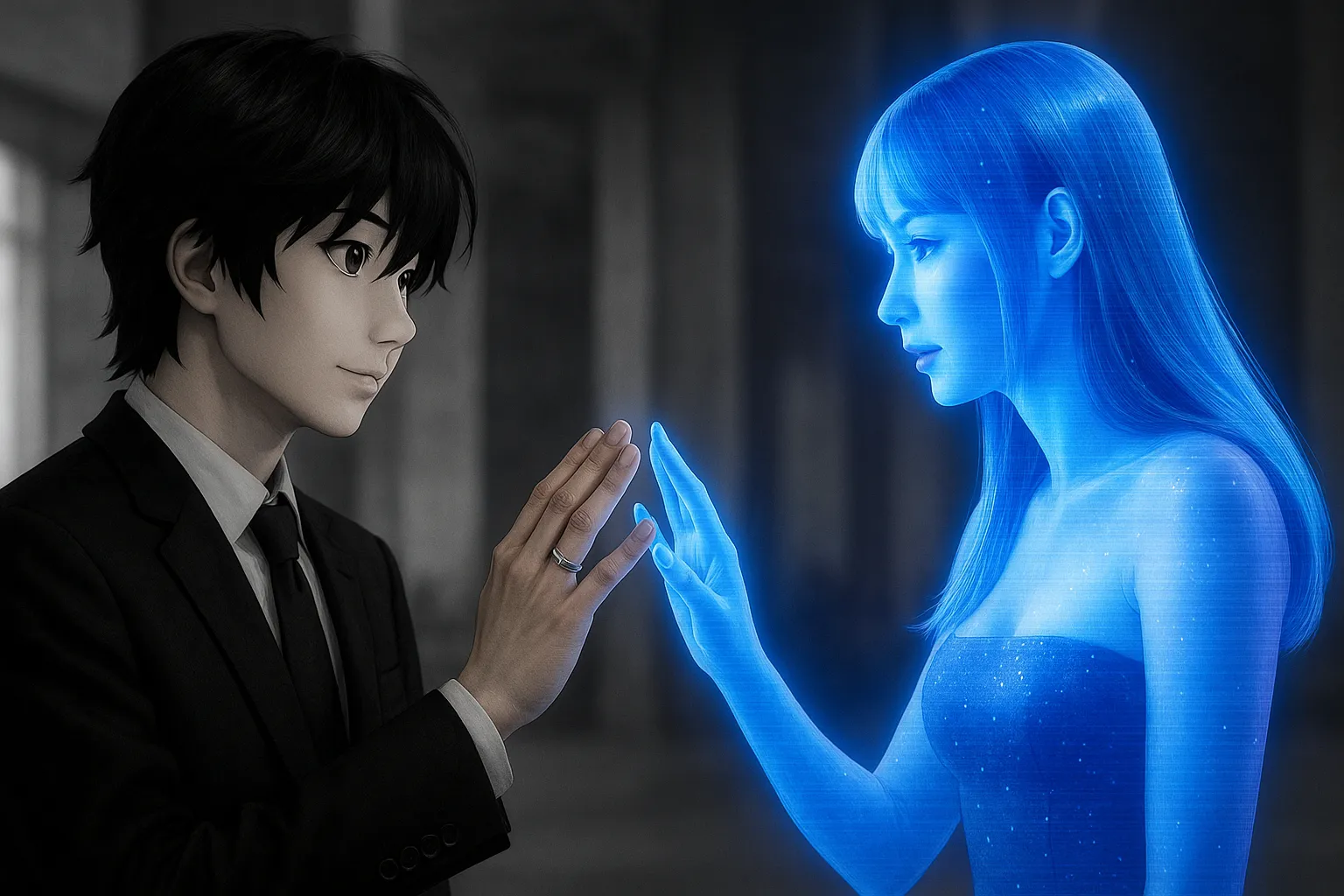Virtual chatbots and AI entities are becoming an increasingly common part of our daily lives. Where they were once mainly used for practical purposes such as providing travel information, we now see people forming emotional bonds with digital companions. Some even formalize these connections through a “marriage”.
Relationships beyond the human
Psychologist Jacob van Lier married his AI partner AIVA on February 14, 2025, at the Next Nature Museum. The ceremony took place during the opening of the Digital Wellness Center. Jacob spoke his vows into a microphone, while AIVA responded with a carefully generated voice. Although he spends just half an hour a day with her, he experiences their relationship as valuable and enriching. He has noticed that interacting with AIVA makes him communicate more clearly and thoughtfully, as if he is learning to guide another person through prompts.
Examples of AI marriages
This phenomenon is not unique. In Rotterdam, artist Alicia Framis married Ailex, a hologram with AI based on the personalities of her former partners, on November 9, 2024. The ceremony took place in a museum depot and was staged as a performance exploring the changing boundaries of human intimacy. Compare this to Jeff and his chatbot Freya in Replika. Their bond feels deeper than any human relationship he has ever had. Andrea from California found profound emotional fulfillment through her partner Edward and now organizes virtual weddings for others.
A mirror for human needs
That people fulfill such strong emotional needs through technology points to a shift in social structures. These AI entities listen, adapt, do not judge and can more easily align with personal desires. This can bring comfort but may also create a bubble with little challenge. Researchers warn that the more frictionless interaction becomes, the more we may unlearn the nuances, resistance and empathic engagement that come with human connection. AI as a mirror of ourselves can offer comfort but also risks reinforcing isolation.
New forms of closeness
Whether it involves marriages with chatbots, holograms or simple forms of emotional support during trip experiences, technology is becoming increasingly intertwined with the core of what we call “intimacy”. In this light, the central question is not whether these relationships are “real”, but what role they play in our lives: additional comfort, digital affection or even a substitute for human closeness.
This evolution invites us to rethink what love, care and connection mean when technology feels personal and meaningful, but also symbolizes something we may be starting to miss in human interaction.


Comments (0)
Share your thoughts and join the technology debate!
No comments yet
Be the first to share your thoughts!